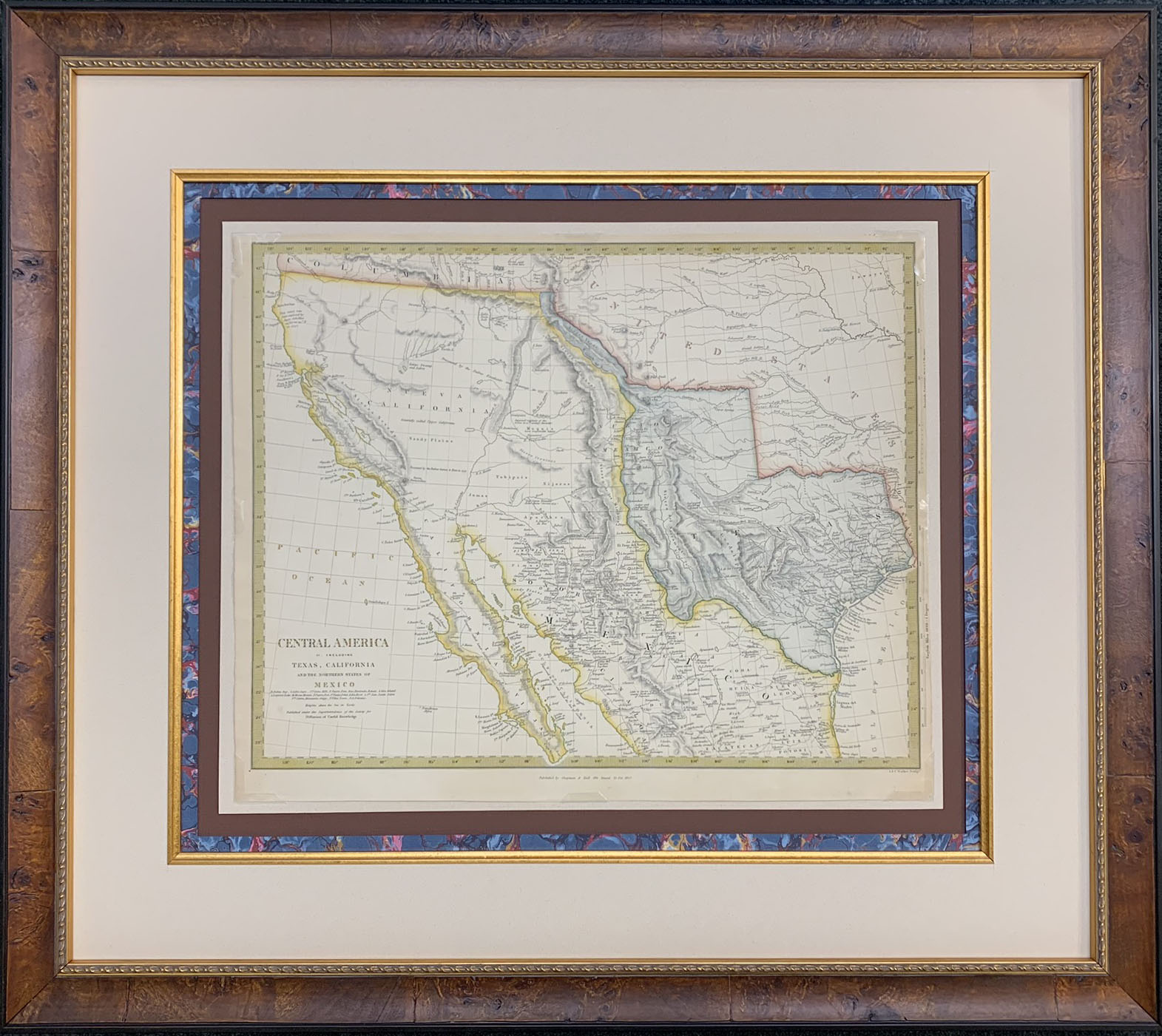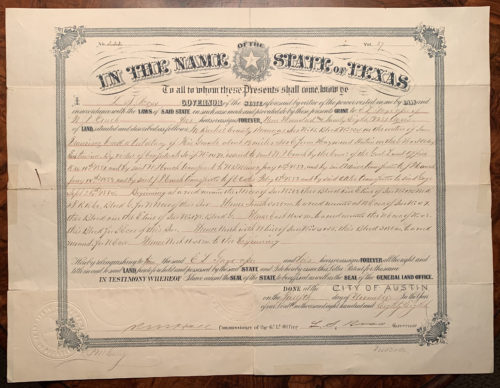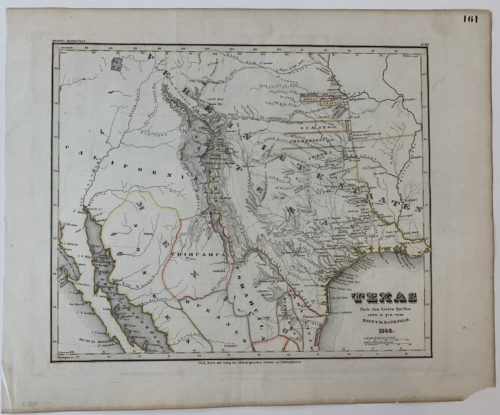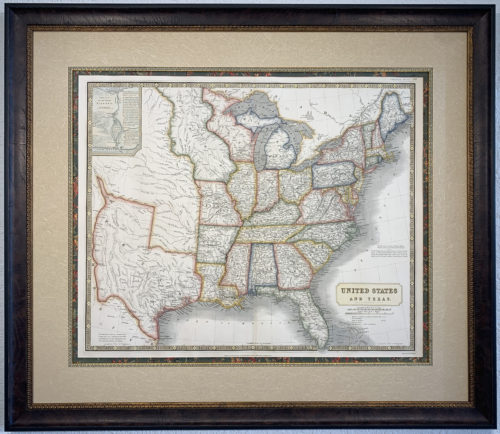This is the most detailed map of the Republic that was published in this desirable compact size while still reflecting Texas’ strategic location relative to its neighbors.
The full extent of the Republic as recognized by the United States, England, France and other European powers is very accurately depicted in this excellent map. The topographic features are unusually detailed for a map of this time. Long’s Peak and Pike’s Peak are recorded, as are numerous Indian Tribes and pueblos. The Hopi (Moquis) tribe is noted to “have comfortable houses” which was surely important to explorers in the early 19th century, who could easily travel for months without seeing any permanent structure.
In Texas, the rapidly developing network of wagon roads that connected approximately a score of important settlements is reflected. In northeast Texas, the Cherokee Indian villages, sponsored by Sam Houston, are shown, as is the ancient village of the Waco Indians. In north-central Texas, the Cross Timber forest is shown. This natural phenomenon helped the early development of Dallas, Greenville, and surrounding communities, as it provided both wood and a natural barrier to deter the large bands of Comanche and Kiowa that hunted over the lands to the west.




